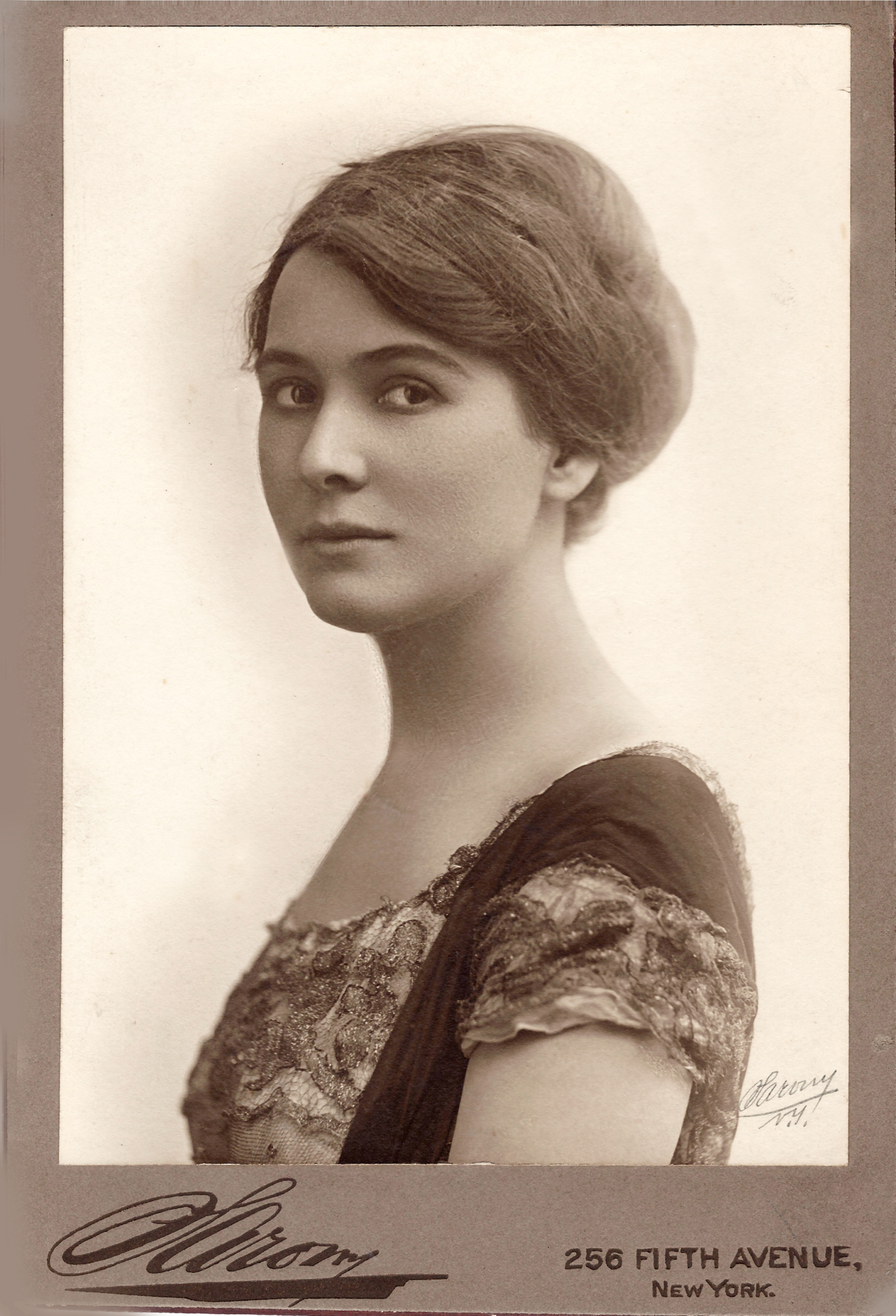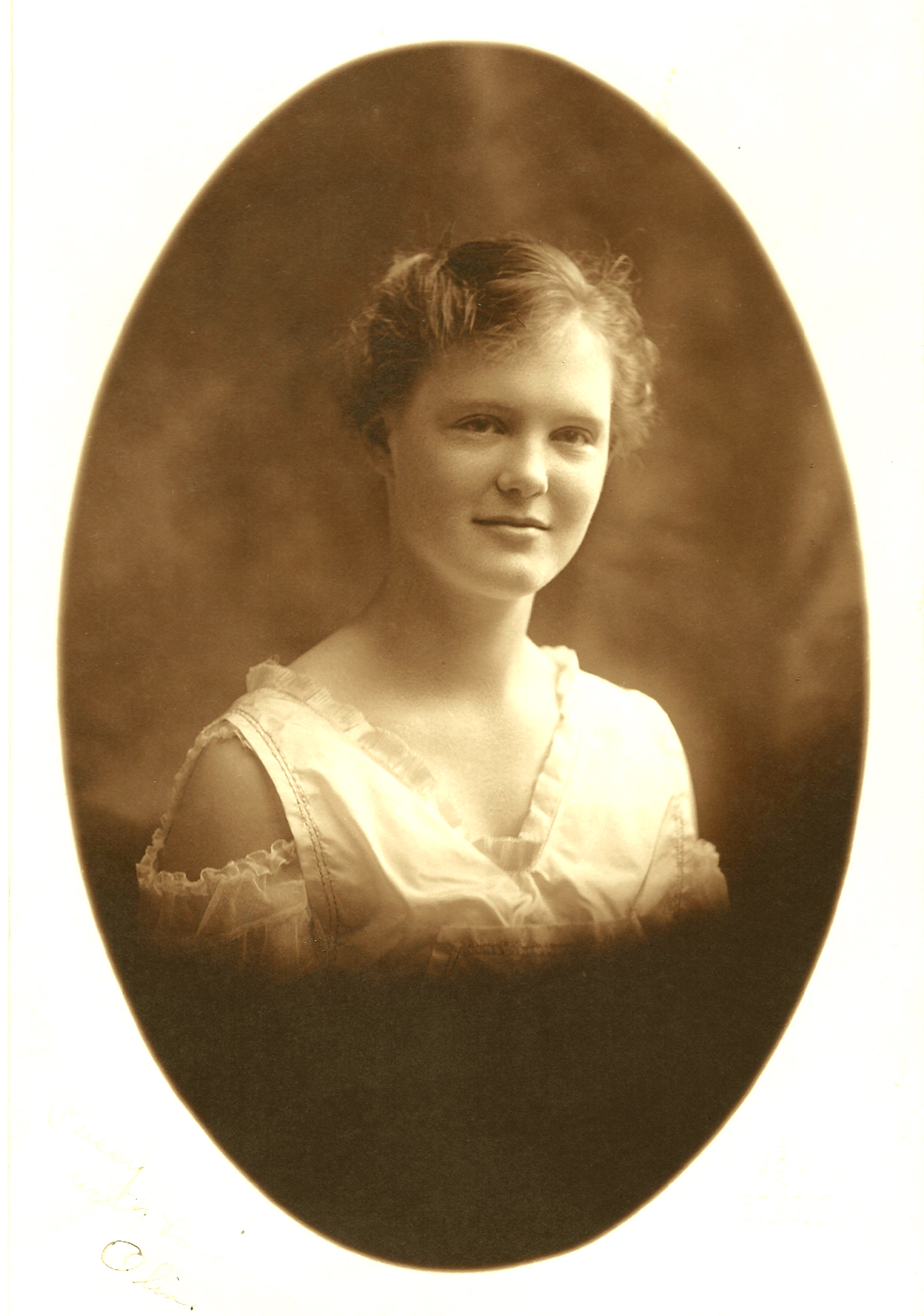
Figure 1 – Portrait of Carrie Sterling by Otto Sarony, c 1898.
I’d like to return to one of my “Favorite Photographs” postings of 2014, Arnold Genthe’s stunning photograph of Nora May French, 1907. And as a reminder of the story behind French’s soulful eyes – Nora May French (1881-1907) had a “pilgrim soul.” She was a bohemian poet in Carmel-by-the Sea circles, the circles of Jack (1876-1916)and Charmian (1871-1955) London. Nora was trapped in the ambiguity of the bohemian lifestyle for a young woman of her day, tormented by social pressure to accept a conventional marriage. On November 11, 1907 while staying with friends, Carrie and George Sterling, in Carmel, Nora attempted suicide with a handgun. But as a result of her trembling hand, she missed her mark only shooting off a lock of her hair. But during the night of November 13-14 she killed herself by ingesting cyanide. As a tribute, her friends collaborated in having a memorial collection of French’s poems published in 1910, which was republished in 2009.
The photograph, I think, is a masterful and touching piece of work. It is a tribute to Genthe’s skill as a portraitist – even without “Buzzer the Cat.” I think that we can learn a lot from the great portraitists of the time, a lot about composition, posing, and, of course, lighting. And one of the points that I have been learning is that there were so many wonderful practitioners of the art during the Belle Époque. Photography had come into its own, materials were better, or at least, easier. And while Eastman’s magnificent inventions was making it simple to create your own mediocrities, there was still a purpose to fine photography studios. I am being a bit unfair, needless-to-say. There were plenty of mediocre portrait studios and plenty of talented amateurs around.
And this is the very point. Often who is remembered and who is forgotten is a matter of serendipity. As regular readers of this blog will recognize, I have become intrigued by the careers of New York Portrait artists Napoleon and Otto Sarony. The distinction gets very fuzzy. In the later years of Napoleon’s life, his son Otto presided over almost every photograph produced by Sarony Studios. Also, in later years Otto Sarony sold the rights to his name, so that he could take up other pursuits, such as yachting.
I would like today to offer up (Figure 1) the portrait of Caroline (Carrie) Rand Sterling (1880-1918) likely taken by and signed in the lower right by Otto Sarony. What is the date? Judging from her face, one would think Carrie, born in 1880, to be 18 to 20 years old. We know from the Sarony Chronology that the firm moved to 256 Fifth Avenue in 1885. And we know that Otto died in 1903. So I think that we can reasonably place the portrait as 1898 to 1903 – truly fin-de-siècle. I think this every bit as charming and wonderful a portrait as Genthe’s portrait of Nora French. Both were clearly meant to adore and flatter their subjects. Both have a wonderful sense of light.
Fortunately, Sarony’s portraits, especially those of lesser known figures, sell very modestly, and I recently purchased this photograph on Ebay. I have “touched it up,” which means that I have removed hypo spots, reticulations, and other flaws. I have not changed either the basic tonal range or coloration. I have left that to Otto’s craftsmen and time.
As I’ve already indicated, there is a connection between Carrie Sterling and Nora May French. Carrie was the wife of the West Coast poet George Sterling (1869-1926). For West Coast readers, I should point out that there is a little park dedicated to George Sterling in San Francisco at the corner of Hyde and Greenwich Streets, atop Russian Hill. It was originally named George Sterling Glade in 1928. Its single bench broke in the 1960’s, and its plaque was stolen in the 1970’s. Fortunately it was rededicated in 2005 as “Sterling Park.”
Carrie and George Sterling, like Nora May French were close members of Jack London’s bohemian circle, along also with the great fantasy writer Ambrose Bierce (1842-1914)- shades of the Cthulhu mythos. There are several images of them at Carmel By the Sea – really snapshots of friends having a good time sailing or at the beach.
We are told that they lived a very unconventional, even debaucherous, life style. As discussed, it was in fact, while boarding with the Sterlings that Nora first attempted to shoot herself and finally committed suicide on November 13, 1907, by ingesting cyanide, purchased from a local pharmacist under the pretext that she needed it to clean silver. Jack London himself died from a morphine overdose on November 22, 1916, and there is still controversy as to whether this too was suicide or the result of kidney disease.
The story of Ambrose Bierce is a curious one. In October of 1913, the 71 year old Bierce, departed Washington, D.C. to tour the Civil War battlefields of his youth. He is known to have crossed into Mexico and joined Pancho Villa’s army as an observer. His last known communication with the world was a letter he wrote on December 26, 1913. It contained the perhaps strange closing statement that “As to me, I leave here tomorrow for an unknown destination.” From there Ambrose Bierce disappeared to the world – one of the great literary mysteries of all time.
But returning to Carrie, Carrie divorced George Sterling in 1914, after which she lived in Piedmont, California, her sister Lila Havens having found her a job as curator at the Piedmont Art Gallery, which contained Lila’s husband’s private art collection. It is said, that she and George Sterling regretted their separation and divorce. On November 17, 1918 in her Piedmont bedroom Carrie put on an elegant gown, put Chopin’s “Funeral March” on the Victrola, and drank a vial of cyanide.
Eight years later to the day, in the early morning hours of November 17, 1926, a despondent George Sterling locked himself in his room at the Bohemian Club and he too died by drinking potassium cyanide. French, London, Carrie, and George all died in November. When George’s body was found in his room, there were also found scraps of burned and discarded poetry. Two of which read:
“Deeper into the darkness can I peer
Than most, yet find the darkness still beyond.”
***
“I walk with phantoms that ye know not of.”
We have spoken a lot on these pages of how photography “captures moments” of the past. Carrie Sterling looks out at us through time. “Such a pretty face, such a beautiful photograph,” we may say. And here the answer echos back. There was flesh and blood, passion and torment. These were complex people, who led complicated lives.
I look now at Carrie’s portrait much more sympathetically. And I am reminded of a stone bench given by Andrew Dickson White, co-founder and first president of Cornell University, and his wife to the University. It is contemporary with Otto Sarony’s Portrait of Carrie and carries what may well be a message to those of us that imagine the lives of people in old photographs. It reads simply:
“To those who shall sit here rejoicing,
To those who shall sit here mourning,
Sympathy and greeting;
So have we done in our time.
1892 A.D.W.–H.M.W.”









